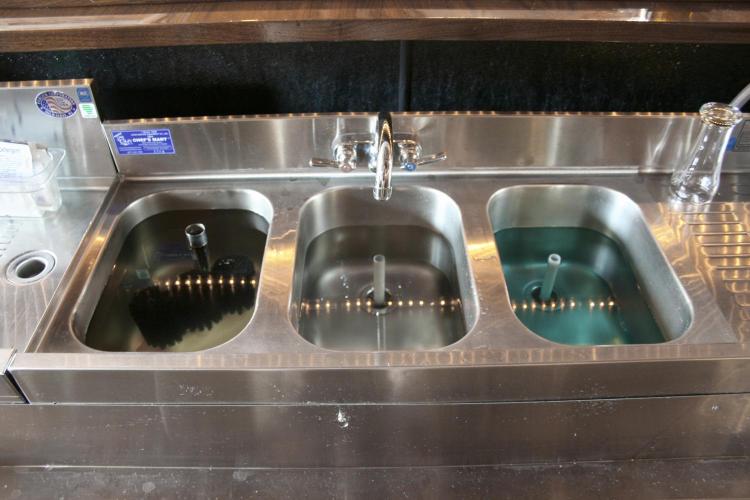
Cleaning Glassware
When a beer looks terrific, the beer drinker often decides that they like it before they take their first sip. That's why food and beverage professionals always say beer glasses must not simply be clean. They need to be "beer clean."
Nothing betrays a dirty glass faster than beer. Dirt, dried beer, sanitizer, grease, or oil may remain on a glass after standard cleaning. When filled with beer, that residue detrimentally changes how that beer looks in several ways. Pouring your beer in a beer clean glass is a hallmark of excellent beer service. A beer clean glass facilitates a properly poured beer. That combination leads to a visually appealing beer experience.
For a beer clean glass, you need the right materials and to follow the proper procedure. Legal requirements and methods vary by country, so you may see various approaches to cleaning beer glassware. Regardless of the method, you can achieve beer clean glassware either by handwashing or using a dedicated glasswashing machine.
Never wash beer glasses with regular dishes or glasses used for milk- or cream-containing drinks. Regardless of the detergent used, the fats and oils from foods and dairy products will linger on beer glassware, destroying head formation and ruining your ability to pour an attractive pint. You should always wash beer glasses in a separate, independent cleaning system dedicated to bar glassware and use inorganic cleaners suited to the purpose. Food and beverage professionals use various methods to sanitize public glassware, and local health regulations usually dictate the acceptable options. Sanitizer compounds are used in some markets while sanitizing with hot water is employed in other cases. Both can effectively sanitize glassware. If you use a chemical sanitizer, a quick rinse of the glass with clean, cool water immediately before filling helps remove any residual sanitizer and improve the beer's appearance.
How do you know if your glass is beer clean? Common signs of dirty glassware include bubbles adhering to the inside of a glass (in the liquid portion of the beer). If your glassware isn't beer clean, you may also notice poor foam formation or head retention, making the beer look unappealing. Lacing, or rings of foam residue, on the inside of the glass as one consumes a beer is a tell-tale sign of a beer clean glass--if you're not seeing this, you're not getting a beer clean glass.
Beer professionals use various techniques to confirm the effectiveness of their cleaning methods. A simple water rinse can reveal the sheeting of water on the inside, indicating a beer-clean glass. You can also conduct a salt test to show whether your glass-cleaning regimen works correctly.
Are you ready to learn more about the perfect pour, selecting glassware for your beer, beer glass traditions, and more? The Our Road to Cicerone: Keeping and Serving Beer course covers the logistics of beer management, draft beer dispense technology, techniques for pouring beer, and using and maintaining draft equipment. Each unit contains readings or suggested activities. You can complete it at your own pace and earn a digital badge after passing the end-of-course quiz!

Ray Daniels
Ray Daniels is the founder and director of the Cicerone Certification Program. He is a veteran beer educator and has traveled to more than 30 different countries in search of great beer. You can find Ray on Twitter.


Comments
Leave a Comment or Question!
All fields required.